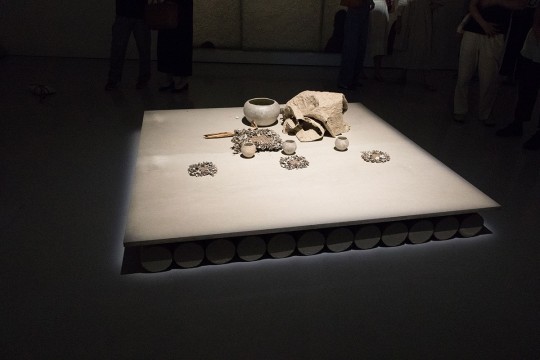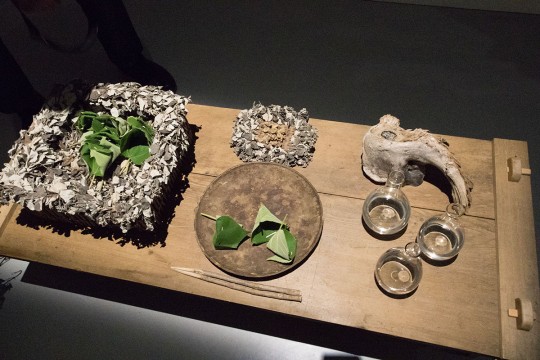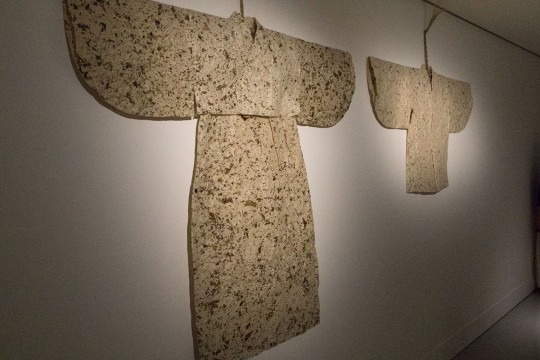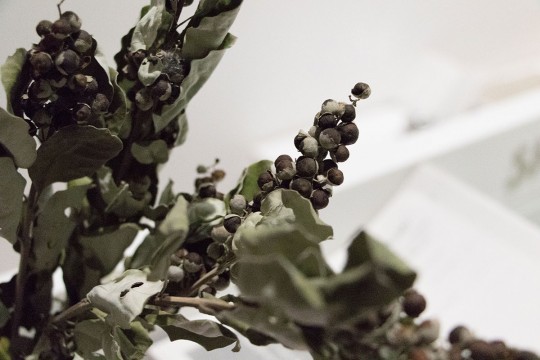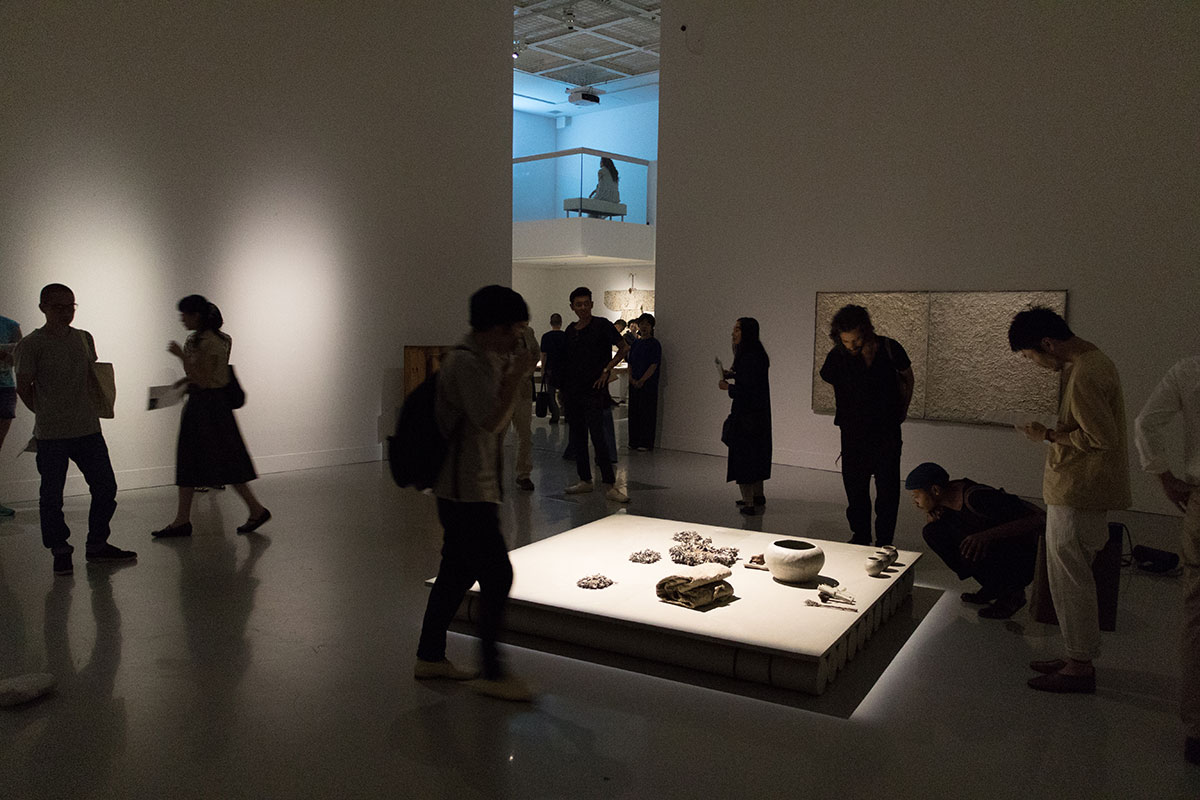
The theme of this exhibition is “paper” which is the closest craft in our life. Among them, the exhibition focuses on “Tesuki-washi”, hand-made Japanese paper from natural materials.
Inside a gloomy gallery, gently lit a stand. This is the stage where “Funamizu-kai” is held. The stage is made under a image of a raft facing toward the north. This comes from the fact that ancient people used the Polar Star as a landmark in their lives.
Instruments for the ceremony are also placed on the table beside the stage. On the lid basket on the left and the paper tray in the center are the cups made of paper mulberry leaves. At “Funamizu-kai,” water is given to the audience with this cup. While the whistle sound similar to the sound of the wind or bird’s echo sounds, the host gave water silently. It felt just like an ancient ceremony.
Those are paper cloths worn by performers at “Omizue” and “Funamizu-kai”. The clothing on the left was produced by a paper maker in the mountain with seaweeds dipped into water and the one on the right was made by a paper maker by the sea with dipped mountain grasses.
The works of Japanese paper on the exhibition were died with beach vitex. Beach vitex is a beach plant with a unique scent and also used as incense and medicine. Smoked beach vitex and works made from beach vitex are on display. The venue is filled with their fragrance.
In the gallery talk session, Mr Masaki Maeda and Ms Sumiko Ishii from “Kogei Pankusu-sha,” a unit that produced works for this exhibition, talked about their thoughts on paper and water. Paper is usually for writing letters and wrapping things. However, Mr. Maeda says that he feels something will be born from the paper before it plays a role and that’s why he’s attracted to it.
“Paper” has been supporting people’s lives from ancient times, enriching them. Why don’t you feel this charm once again on this occasion?
Exhibition details:
https://home.ginza.kokosil.net/ja/archives/35412
